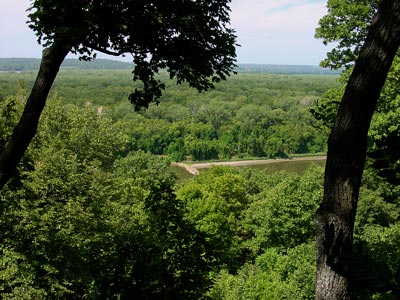
North to Sioux City, IA
Aug. 17-18, 2003
After spending the night with Nancy's cousin Ruth and her husband Jerry, we headed north up the Missouri River. The weather was very hot. It was 101 degrees in Kansas City on Aug. 16 and 104 degrees on Aug. 17. Considering Missouri humidity, that is awfully hot! We looked for campsites with electrical hookups so we could run the air conditioner in the motor home. Lewis and Clark surely experienced similar heat on their journey and didn't have air conditioning, but we were very glad we did!

First stop was Weston Bend State Park just north of Leavenworth, KS, where we
had an overview of the Missouri River and valley. The area here is largely
forested.
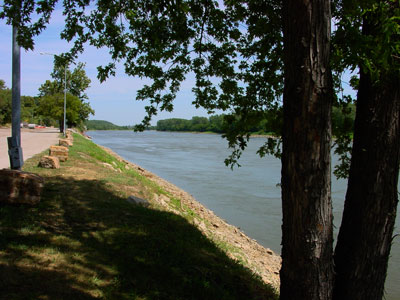
A city park along the river in Atchinson, KS. Lewis and Clark celebrated July
4, 1804 at this location.
We went to see the keelboat and pirogue replicas at Lewis and Clark State Park in Onawa, IA, but we had bad luck; the boats had been taken to Des Moines for the state fair and would not be back for a couple of days.

In Brownville, KS we toured the Lewis and Clark riverboat, which is a
sidewheeler that operated on the river from 1932 to 1970. It is one of four
dredgers that helped deepen the river so that barges could travel upstream as far as
Sioux City, IA. The dredgers also shortened the river by over 100 miles by
removing some of the oxbow bends.
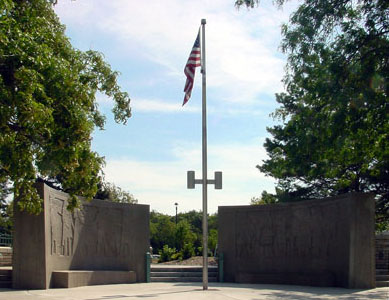
The Lewis and Clark monument in Council Bluffs, IA. This is approximately the
location where Lewis and Clark had their first council with Indians. They called
the area Council Bluffs in commemoration of the event.
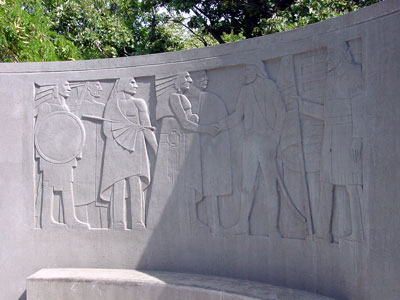
A close-up of the artwork on the stone wall; it depicts Lewis reaching an
agreement with the Indian chiefs.
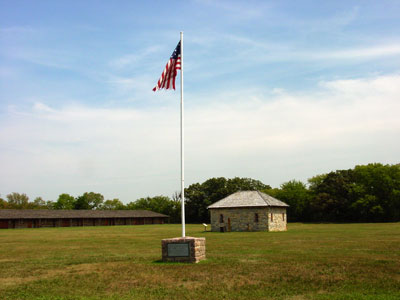
Fort Atkinson, NE, which is on the Missouri River about 20 miles north of
Council Bluffs. The fort was started in 1820 and housed up to 1000 soldiers. It
was abandoned in 1827, when the Army decided that the fort was no longer needed
in that area.
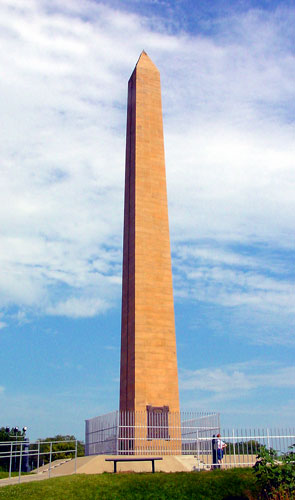
This 100 foot high obelisk in Sioux City, IA marks the grave of St. Charles
Floyd, who was the only person in Lewis and Clark's Corps of Discovery to
die during the expedition. He is believed to have died of appendicitis. The
medical profession of that day was unable to treat this illness, so he would
have died even if he were back in civilization.

This rather impressive statue of William Clark, Meriwether Lewis, and his dog
Seaman, is outside the Lewis and Clark Interpretive Center in Sioux City, IA.
We camped across the river from Sioux City. Our campsite was right on the Missouri River; that night we experienced a genuine prairie thunderstorm - a real gulley washer! We were glad we weren't in a tent!